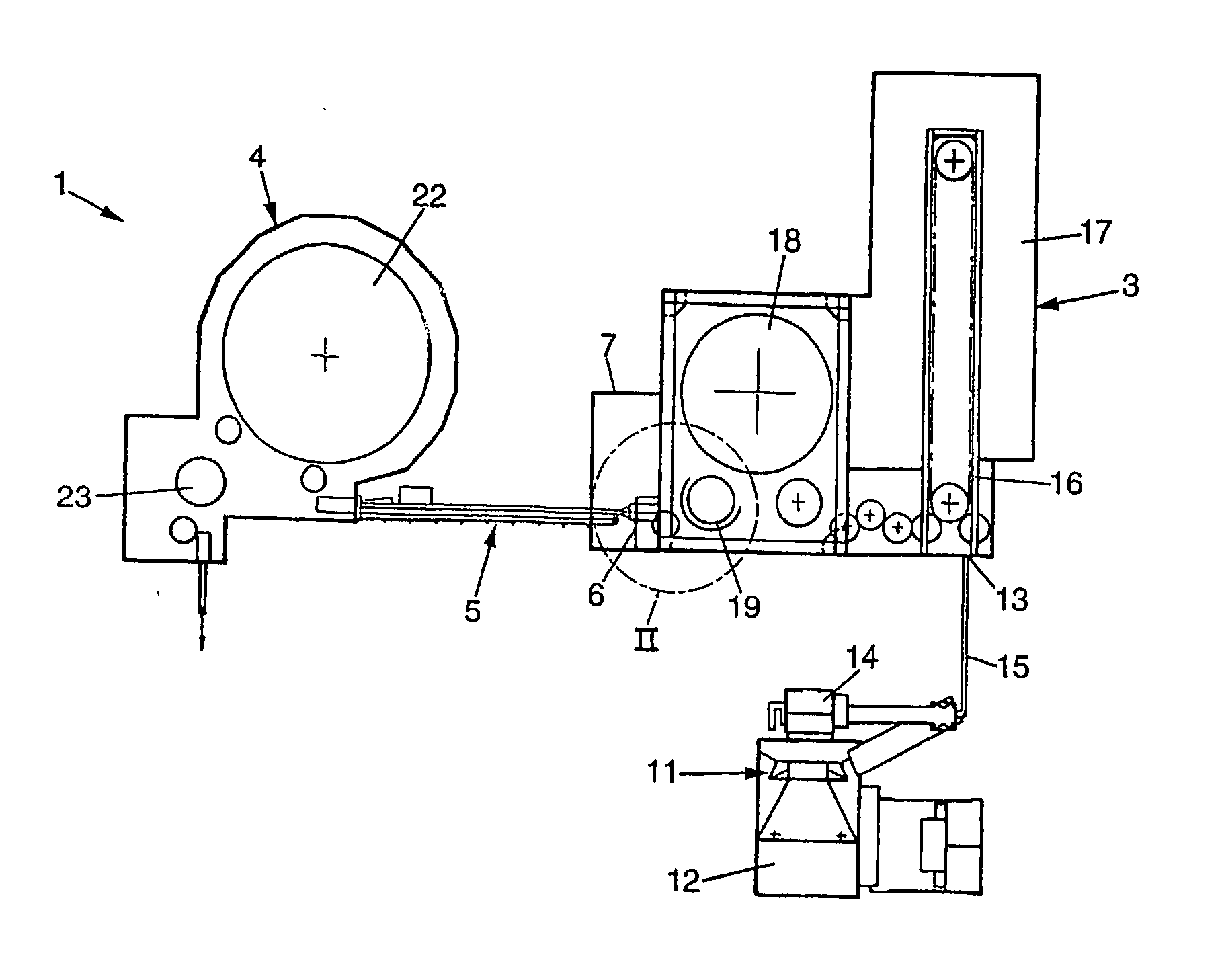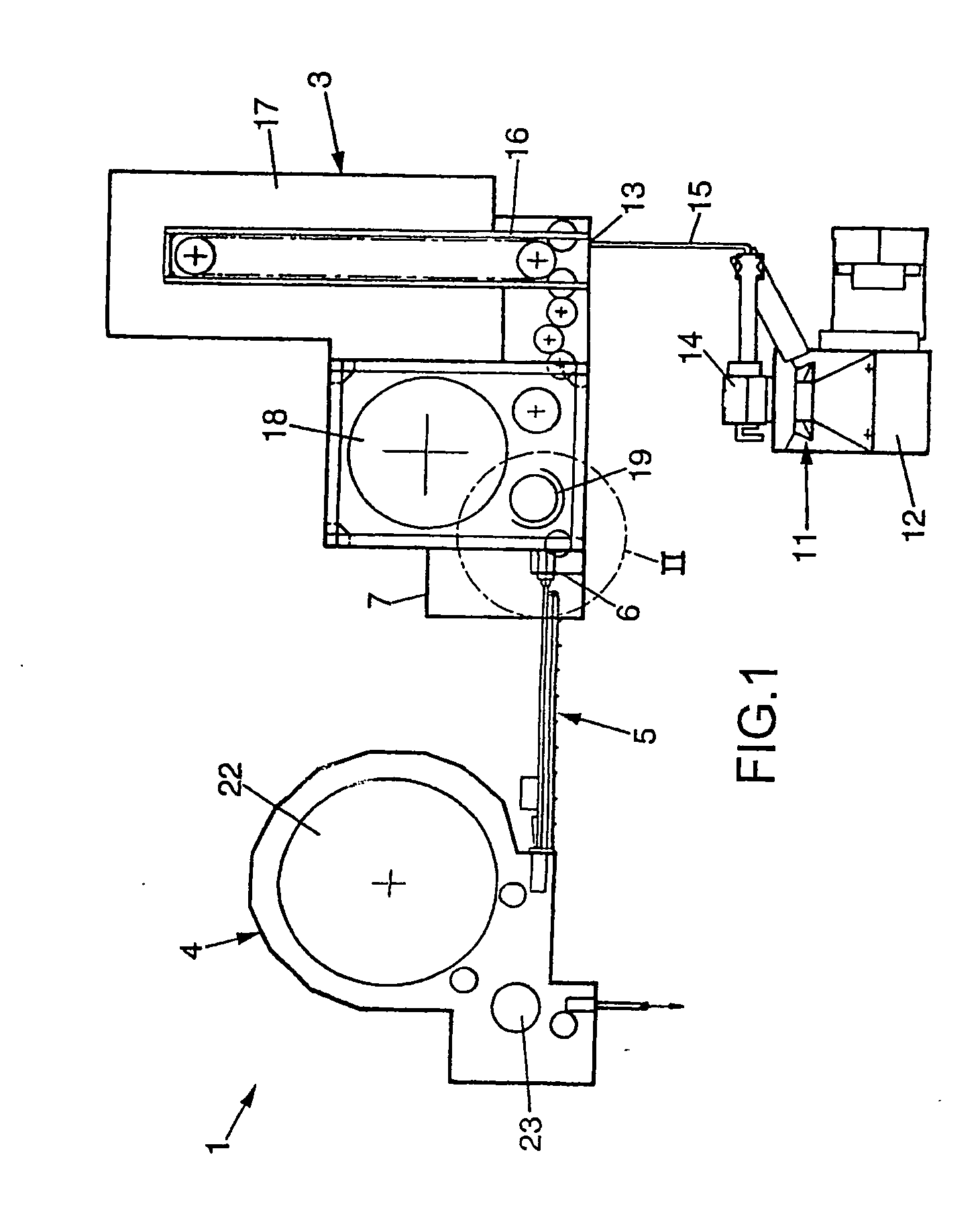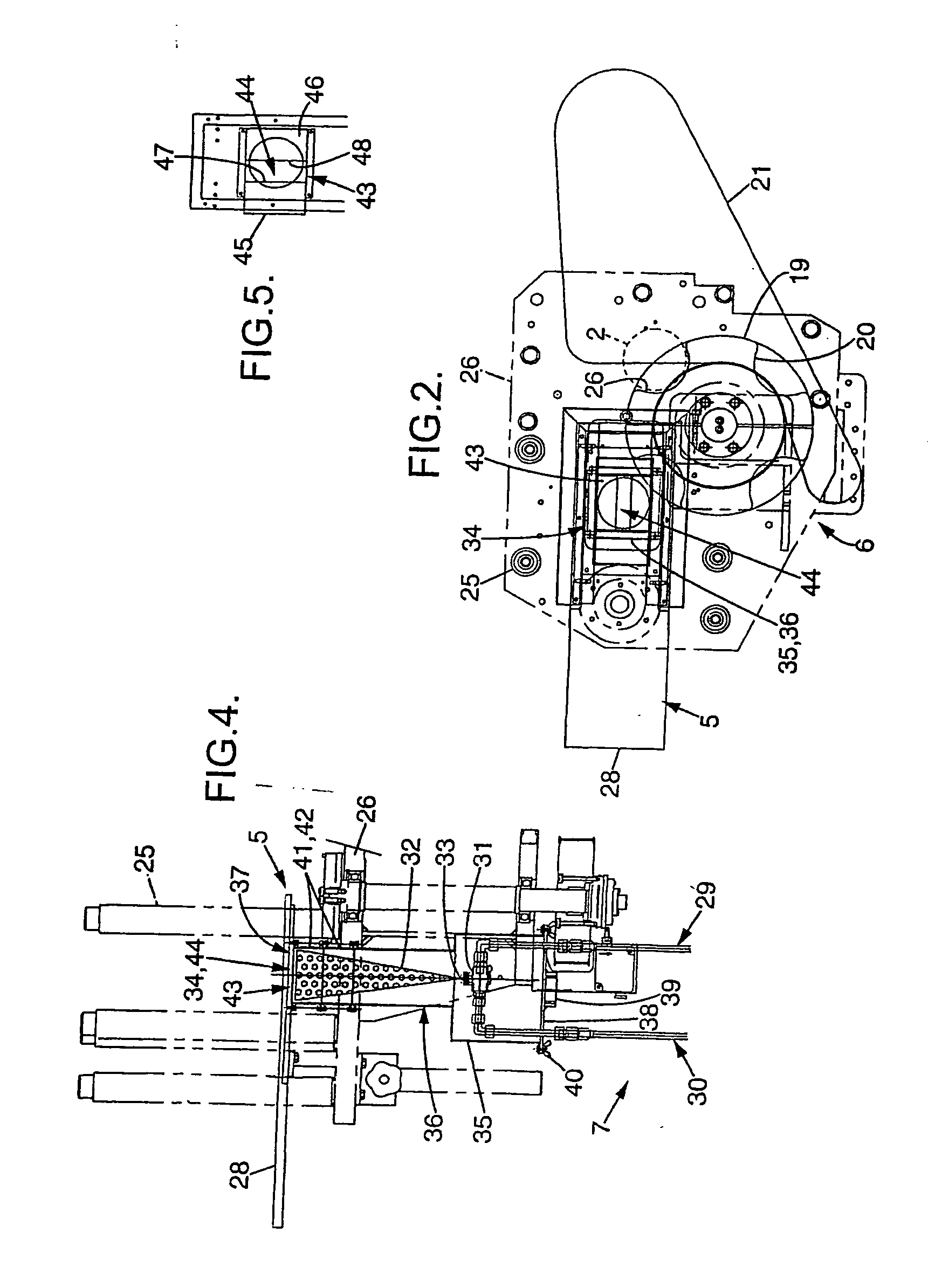Method and Installation for the Production of Containers
a container and installation method technology, applied in the field of containers, can solve the problems of insufficient heat transfer speed, insufficient efficiency of container complex shapes, and negative impact on production rates, so as to achieve effective cooling and increase production rates
- Summary
- Abstract
- Description
- Claims
- Application Information
AI Technical Summary
Benefits of technology
Problems solved by technology
Method used
Image
Examples
Embodiment Construction
[0033]FIG. 1 shows an installation 1 for the production of containers 2 such as bottles, starting from thermoplastic preforms.
[0034] The installation 1 comprises a forming unit 3 to form the containers 2, a filling unit 4 to fill the containers 2, a conveyor 5 for conveying the formed containers 2 from the outlet 6 of the forming unit 3 toward the filling unit 4, and a cooling unit 7 placed at the outlet 6 of the forming unit 3 along the path of the containers 2 formed by the conveyor 5.
[0035] The containers 2 are made for example of polyethylene terephthalate (PET), polyethylene naphthalate (PEN), or any other suitable thermoplastic. Once formed, each container 2 has a body 8 (which may be cylindrical), a neck 9 and, at the opposite end to the neck 9, a base 10.
[0036] The installation 1 additionally comprises a supply unit 11 which delivers the preforms to the forming unit 3. The supply unit 11 comprises, for example, a hopper 12 in which the preforms, prefabricated by injection...
PUM
| Property | Measurement | Unit |
|---|---|---|
| relative pressure | aaaaa | aaaaa |
| relative pressure | aaaaa | aaaaa |
| temperature | aaaaa | aaaaa |
Abstract
Description
Claims
Application Information
 Login to View More
Login to View More - R&D
- Intellectual Property
- Life Sciences
- Materials
- Tech Scout
- Unparalleled Data Quality
- Higher Quality Content
- 60% Fewer Hallucinations
Browse by: Latest US Patents, China's latest patents, Technical Efficacy Thesaurus, Application Domain, Technology Topic, Popular Technical Reports.
© 2025 PatSnap. All rights reserved.Legal|Privacy policy|Modern Slavery Act Transparency Statement|Sitemap|About US| Contact US: help@patsnap.com



